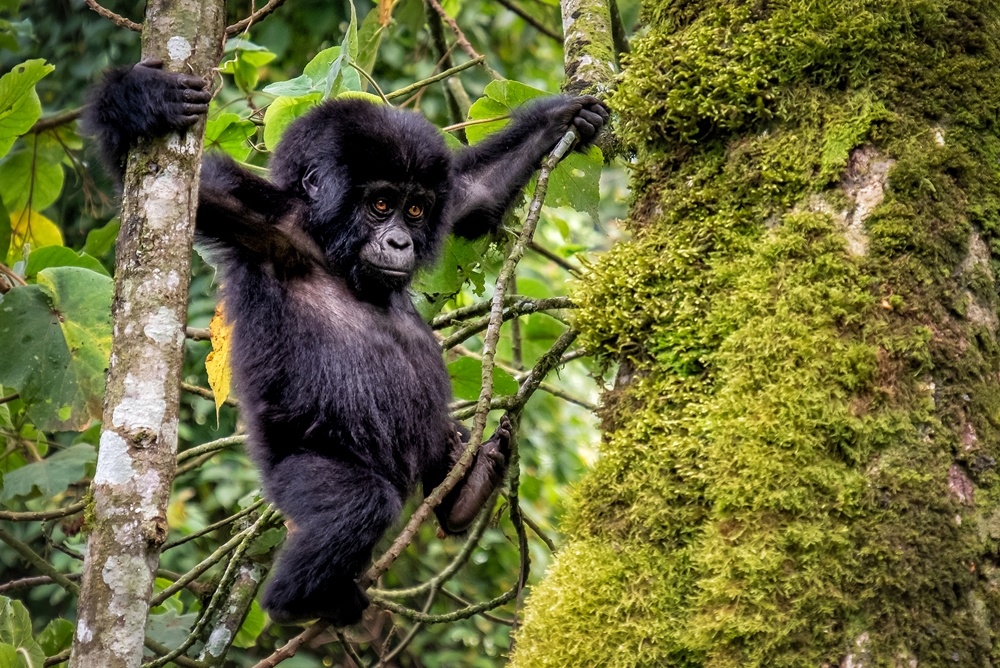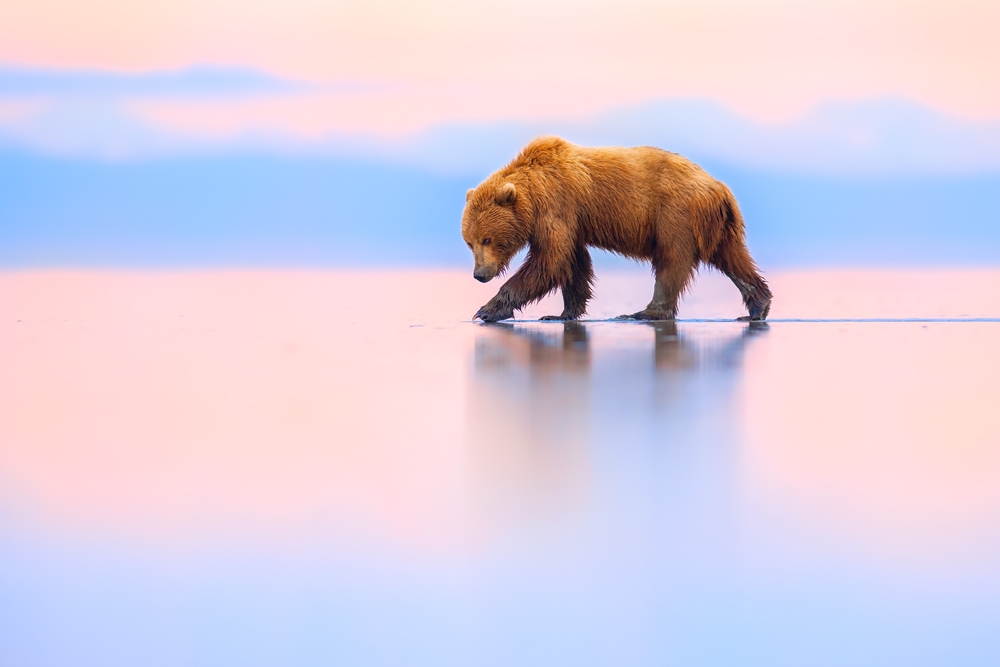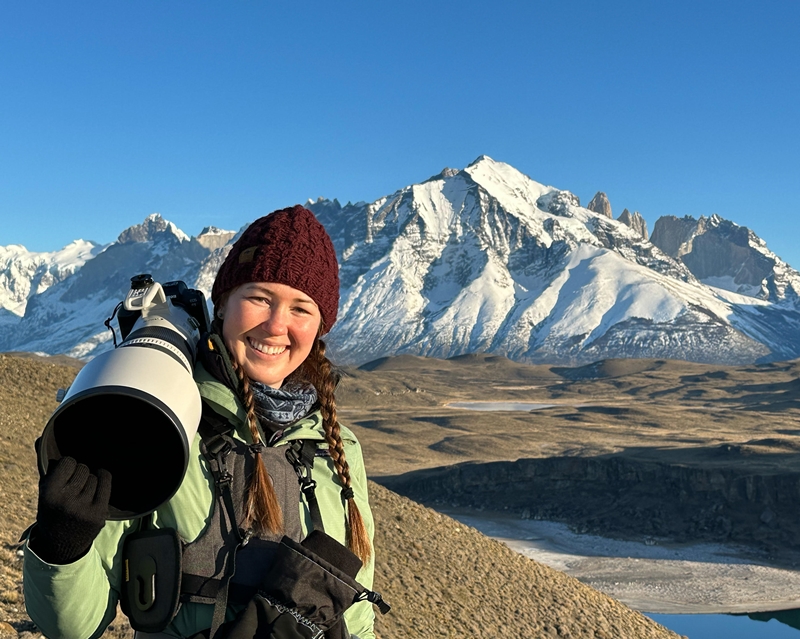Focus for Survival 2023 Shortlist
Just three images have been short-listed for the Bradt Guides’ Focus for Survival Photographer of the Year 2023 award. The images were selected by Bradt Guides authors/photographers Nori Jemil and James Lowen and will be profiled in the Bradt Guides’ exclusive members’ newsletter (2 October issue). The winner will be announced on Wednesday 8 November at the Private View event at gallery@oxo. These three images will be exhibited at our autumn exhibitions and be available to bid for in our online fundraising auction in support of our Project Fund (concludes 12 November).
**You are also invited to pick a winner. Select your favourite from all 12 calendar images for the People’s Choice Award – voting open until 18 October – vote here>>>**

Swingtime, Ria Waugh
Mountain Gorilla, Bwindi Impenetrable Forest, Uganda
Fujifilm XT-2 + XF18-135mm: 1/250 sec at f/6.4 ISO 800
“Within the mountainous cloud forests of central Africa live the last surviving Mountain Gorillas – a subspecies of the Eastern Gorilla. Their sole habitat consists of a network of parks crossing the borders of Rwanda, Uganda, and the Democratic Republic of the Congo. Since their discovery in 1902, their population has endured years of civil unrest, poaching, habitat loss, and disease – threats so severe that it was once thought the species might be extinct by the end of the 20th century. Despite the odds, the subspecies has made a remarkable comeback in recent years, although their continued survival depends on conservation efforts. During an unforgettable gorilla trekking expedition through the Bwindi Impenetrable Forest, I had the opportunity to observe these incredible creatures up close. Our trek led us to a family group with many young gorillas that were enjoying swinging through the trees. I would frequently see young gorillas, such as this one, swing above my head, followed by a crash on the forest floor as they were still developing their skills. Nevertheless, they quickly got back up and tried again. It was an extraordinary experience that highlighted the importance of protecting these magnificent animals.” Ria
Judges Comments
We’ve all seen plenty of images of mountain gorillas in the wild – often in larger groups or with the focus resting on an impressively large, seated adult, perhaps spied through vegetation. So, to see this infant in close proximity, in an action shot perfectly situated to the left of the frame with its intense eyes firmly planted on something out of shot, is unusual and endearing.
The viewer gets a sense of the physical effort and mental determination that’s needed to move through the canopy. We naturally like to ascribe human emotions and values when we observe animal behaviours – it’s no wonder we want to create stories and try to find connections. But given the close family ties between gorillas and ourselves, it’s starkly obvious that this animal’s body language and facial expression are compellingly similar to our own. Its small hands curved around the branches, with opposable thumbs to aid it, look remarkably like the hands of a human child in a playground, echoed perhaps in the photo’s title – “Swing time”.
The colour palette too is redolent of lush jungle habitats, and the greens of the Bwindi Impenetrable Forest, Uganda, are striking against the gorilla’s amber eyes and intensely dark coat. The environment here is vital, not just for something that the baby animal can cling to, but as one of the few places on Earth, along with Rwanda and the Democratic Republic of the Congo, where this great ape roams, and where conservation is key to protecting it from the threats posed by poaching and habitat loss.

Throughout her life, photographer Ria Waugh has travelled the world and called many different places home. Her parents instilled a sense of adventure in her, moving the family from Southern California to Australia and England for work and sparking Ria‘s passion for exploring new places and cultures. Ria‘s photography showcases her fondness for intimate landscapes, captivating wildlife, and the unique lives of people she has encountered on her journeys. Her desire to capture the diversity and beauty of the world continues to drive her work, whether she’s photographing far-off locations or the everyday beauty closer to home. Presently, she can be found residing in Dublin, Ohio in the United States.
Image: Ria Waugh

Water for Survival
Apurba Kumar Das
Green-tailed Sunbird, Rishop, West Bengal, India
Nikon Z9, Lens Nikor 400mm + 1.4 TC= 560mm ,f/5.6.1/4000.ISO 2800
“This photo was taken in India, near Darjeeling. As we know, forest lands are decreasing day by day resulting in conflict between humans and wildlife. Every living being needs water for survival and that water is not easily available in all places – such as this. Some people help to conserve wildlife by providing food and water in these harsh environments – without help, in such extreme conditions, they may not survive. This sunbird was trying to quench its thirst.” Apurba
Judges Comments
Photographing a bird in flight is difficult. It is hard to get both a fast enough shutter speed (to freeze the action) with a sufficient depth of field (to get the whole subject in focus), and to manage the latter while still achieving nice smooth background bokeh. A bird with both light and dark plumage, as with this sunbird, is also tricky to expose correctly without either burning the highlights or underexposing the dark areas.
This image does a very fine job of treading these delicate tightropes. Technically speaking, the result is a bird that is sharp from eye to all bar the outermost wing feathers, with a water droplet caught beautifully (and entirely sharply) in mid-fall. And yet the background is beautifully smooth and uncluttered. Perhaps the shadows could have been lightened slightly so that we can see more detail on the bird’s head, but this is a minor grumble.
Then there is the behaviour illustrated. It is actually relatively rare to see a bird drinking, even more so, a bird drinking in mid-air. To capture this as a photo is an achievement in itself.
Finally, the composition is unusual and thus admirably bold. Most photographers would have framed this image (whether in the original capture or cropped subsequently) as portrait, yet this is landscape mode. This has the ostensible disadvantage of cutting off the bird’s body above its tail; in theory, this should render the image redundant (one to delete), but in reality, it makes the image more intimate, and the viewer feel more privileged. An outstanding image of an attractive bird, depicting fascinating behaviour, and skilfully executed.

Apurba is an Indian ex-Revenue Service Officer and 65 years old. He has been enjoying photography as a hobby for the last 20 years. His dream is to photograph snow leopards in the cold of the High Himalayas.
Image: Apurba Kumar Das

Cloud Walker
Torie Hilley
Coastal Brown Bear, Lake Clark National Park and Preserve, Alaska, USA
Canon R5, Canon RF 400mm f/2.8 at 400mm and f/2.8, 1/1000, ISO 400
“It was July 2022 and my first time travelling since the pandemic began. I needed a change of scenery to boost my psyche. I knew Alaska would be perfect. Every day, I slowly trudged through the sticky mud with the professional bear guide to take photos of the bears clamming on the mudflats. I was exhausted by the last day, and bored of the grey skies that dominated the week. After testing different angles, I saw the sky gradually start to change colours. I bent down to hover my massive lens over the water to create a smooth foreground. Then the colours began to reflect upon the mudflats. I couldn’t believe what I was seeing. It looked as if the bear was walking on clouds. In a matter of minutes, the colours disappeared.
There was a recent win for wildlife conservation in the area. Mining companies proposed to build a massive open pit mine (known as the Pebble Mine) with heavy infrastructure in Bristol Bay, which would be too close for comfort to the Lake Clark and Katmai National Parks. However, the US Army Corps of Engineers rejected the proposal, thus, avoiding a domino effect that would have irreversibly damaged brown bear and other wildlife populations, as well as one of the last intact salmon ecosystems.” Torie
Judges Comments
Sometimes the simplest images can be the most impressive. The photographer watching a single brown bear as it searches for food on an Alaskan mudflat sees the scene suddenly come to life when the sky changes, and violets and pinks warmly intertwine with the bear’s opaque shadow on the glistening ground. The horizon disappears as reflected sky and earth meld together.
The image was taken at exactly the right moment, with space between all four legs and also around the bear’s head. The clarity and focus of the image allow us to see the haunches and skeletal shape beneath the muscles and brown fur as the bear moves slowly, placing its raised front paw gently and with purpose. The precision of the bear’s behaviour is echoed by the photographer’s skill in capturing the immense and intricate details, from the splashes and water-saturated fur to the long, sharp claws and intent gaze.
All photographers have particular editing styles, and different RAW processing and settings can affect colour saturation and definition. Whatever one’s preference for natural or more creatively edited photographs, this sharp and colour-rich brown bear stands out as an image to be reckoned with, and is very deserving of being short-listed, shining a light on a beautiful animal that is still hunted as a trophy and subject to ongoing habitat threats.

Born and raised in California, Torie Hilley is a wildlife conservationist, artist, and photographer. She was originally a wildlife researcher studying the behavior of predators throughout Southern Africa (Zimbabwe, Zambia, South Africa, and Botswana), before she switched to visual arts. First studying the behavior of lions, she then got her master’s degree in animal behaviour and specialised in the second most endangered carnivore in Africa: the African Wild Dog. Her photography has been featured in National Geographic, Remembering African Wild Dogs, The Nature Conservancy, BBC Wildlife, and counting. She donates 10% of her sales to various ‘smaller’ wildlife conservation organisations because she believes in supporting the “little guys” on the ground protecting wildlife. She is currently exploring the world of wildlife conservation photojournalism to bridge the gap of the visual arts and the sciences.
Image: Torie on a trip to photograph pumas in Chilean Patagonia

